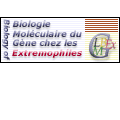
|
|















|
International Summer School
From Genome to Life:
Structural, Functional and Evolutionary approaches
|
WEINSTOCK
Georges |
|
Human Genome Sequencing Center, Baylor College of Medicine, One Baylor Plaza, Alkek N1519, Houston, TX 77030, USA title: Genomics and bacterial pathogenesis The availability
of a complete genome sequence for a bacterial
pathogen opens doors to many avenues of study that
were not easily approached in the past. As with any
sequencing project, the sequence itself does not
demonstrate the function of the genes but
post-sequencing functional analysis is required.
For pathogens, an important part of this activity
is to identify virulence factors as well as targets
for prevention of intervention in the disease
process. The genome sequence provides a listing of
the protein content of the organism, which can be
used to engineer production of each protein in a
surrogate host, such as E. coli, allowing
comprehensive identification of antigens and
vaccine candidates. Moreover, such a reagent set
also can stimulate research in antimicrobials by
providing convenient sources of targets. Whole
genome knockout strategies, targeting gene families
(regulators or pumps for example) or the entire
genome also provides a means of relating virulence
phenotype to specific genes. Similarly, microarrays
give a comprehensive assay for gene networks.
Examples of each of these types of applications
will be given including vaccine and diagnostic
development for Treponema pallidum (causative agent
of syphilis) and gene knockout approaches to
virulence for Enterococcus faecalis, an important
nosocomial pathogen. Use of microarrays for T.
pallidum will also be discussed. Finally, the use
of comparative genomics for identifying virulence
factors will be illustrated. |
|
ADDITIONAL DATA |
|
|